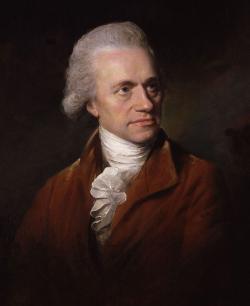William Herschel

Credit: L F Abbott
Occupation: Astronomer & Musician
Year born: 1738
Research Areas: Astronomy, Spectroscopy
"I have made it a rule never to employ a larger telescope when a smaller will answer the purpose."
Source: Sir William Herschel His Life and Works, Charles Scribner’s Sons, New York USA.
Early Life
William was born in Germany but moved to England when he was 19. In England, he worked as a music teacher and spent a lot of his spare time doing astronomy. William rented a small telescope to look at the stars and planets. He dreamed of having his one of his own, so learned how to build a large telescope. He ground and polished the mirrors himself and finished building his first telescope when he was 36 years old.
Career Highlights
William spent 9 years scanning the night-sky and noting the position of the stars. He published his work in star catalogues. One night, William worked out that one bright spot in the sky was not a star, it was a planet. William had discovered the ice giant planet Uranus! This was the first time in thousands of years that a new planet has been found. William was suddenly famous and the king made him the Royal Astronomer. He became a Fellow of the Royal Society and was given money to build new telescopes.
William is thought to have made more than 400 mirrors for his telescopes. His largest and most famous telescope was 12 metres long! At the time, it was the largest piece of science equipment in the world. Other people made their own telescopes using William’s design. This kind of telescope is now known as ‘Herschelian’.
William made many discoveries about our Solar System. He worked out how long it takes Mars to rotate. He also was the first to notice that Mars' ice caps changed size as the seasons changed on the red planet. He discovered Uranus' largest moons, Titania and Oberon and 2 of Saturn's' moons, Enceladus and Mimas.
William also used spectroscopy to learn more about stars. This involves using prisms to split up light from stars. He then measured the temperature of the different wavelengths of light. During these experiments, William discovered infrared radiation.
Legacy
William was the first President of the Royal Astronomical Society. After his death, aged 84, his son, John, carried on his work in astronomy. The house in Bath, UK where he made many telescopes and first observed Uranus, is now the Herschel Museum of Astronomy. The William Herschel Telescope is also named after him.
Other Interests
William was a great musician. He played the oboe, violin, harpsichord, and organ. He composed 24 symphonies as well as church music.

